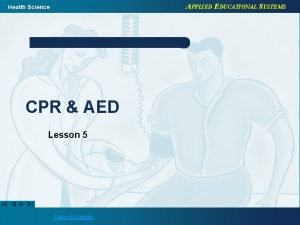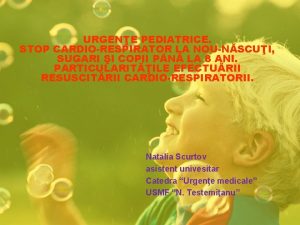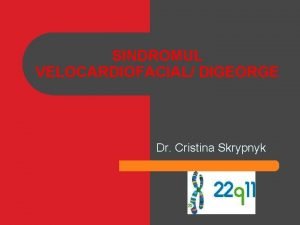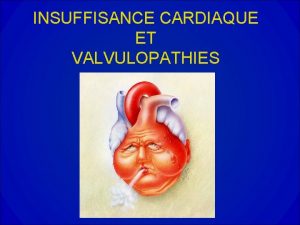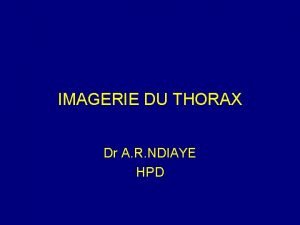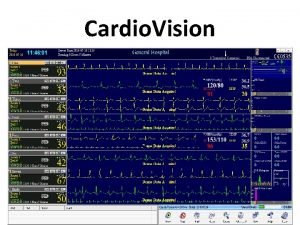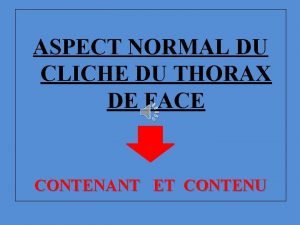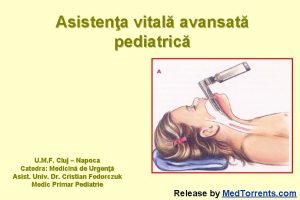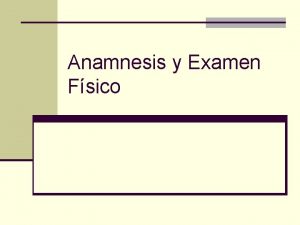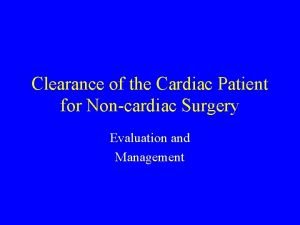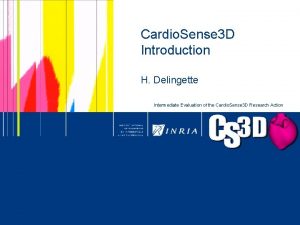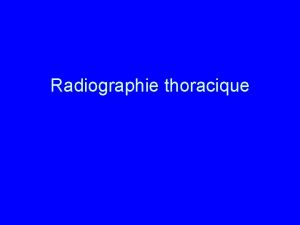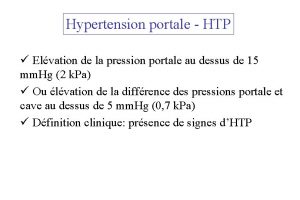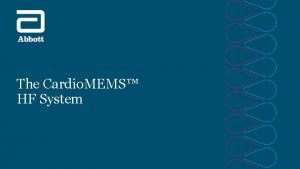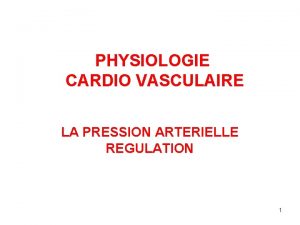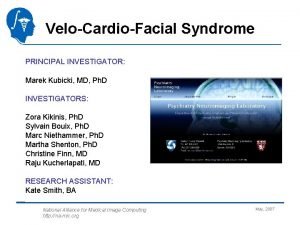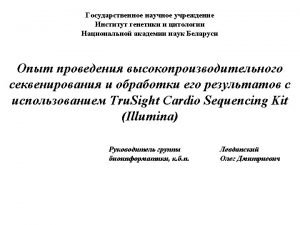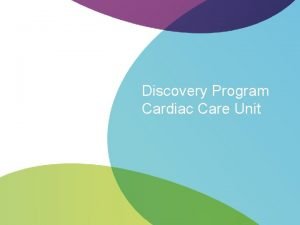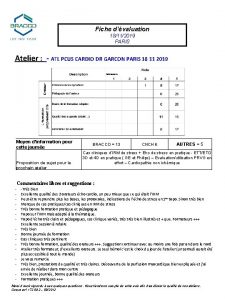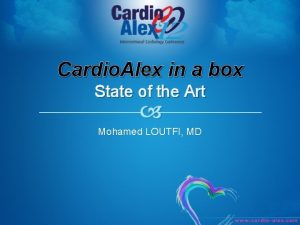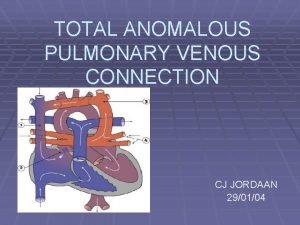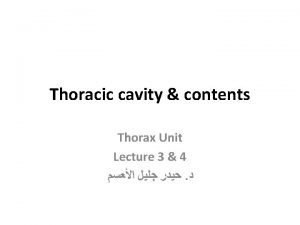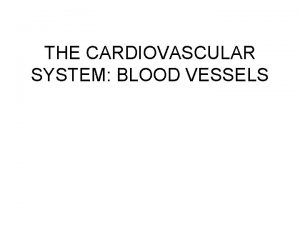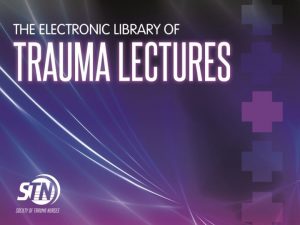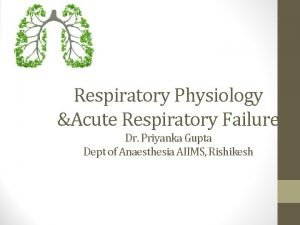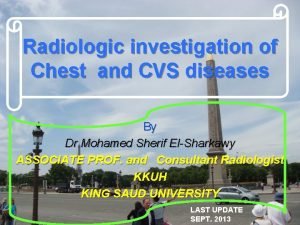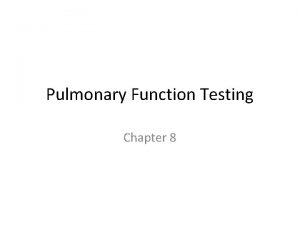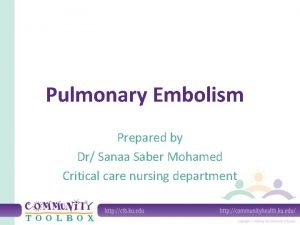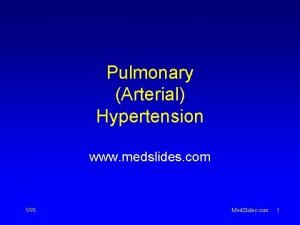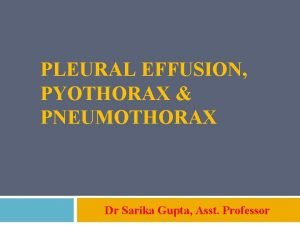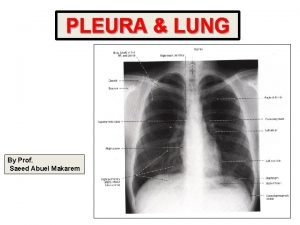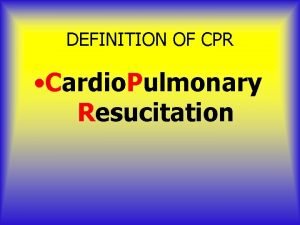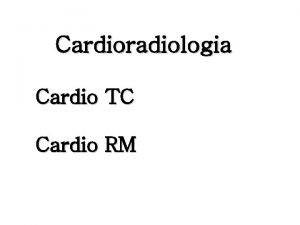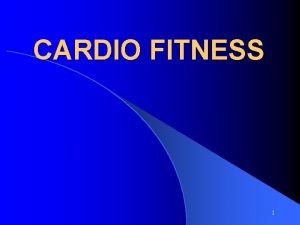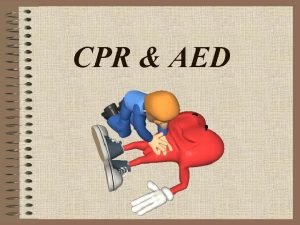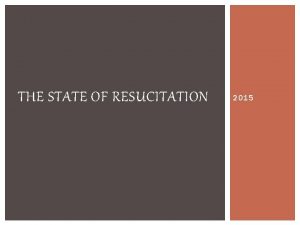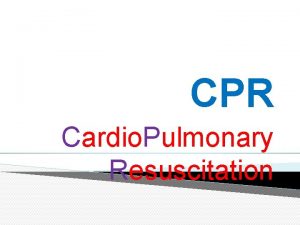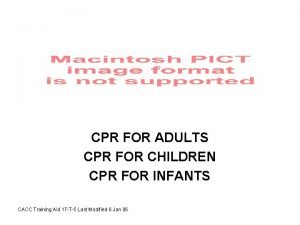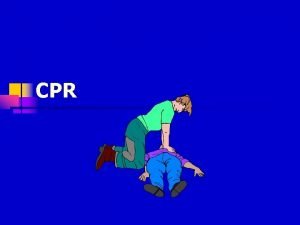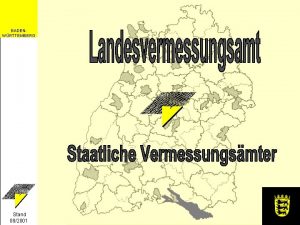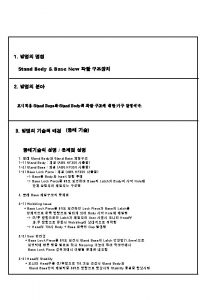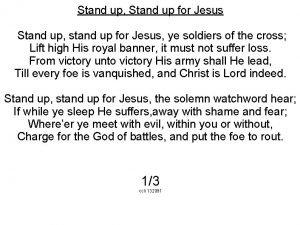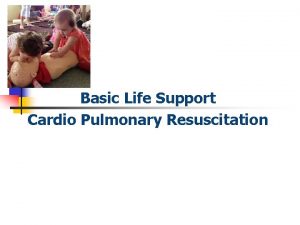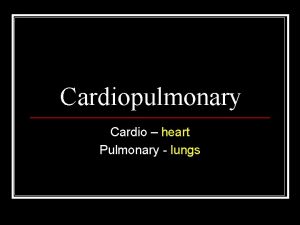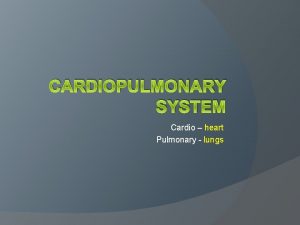CPR Cardio Pulmonary Resucitation What does CPR stand













































- Slides: 45


CPR Cardio. Pulmonary Resucitation

What does CPR stand for? • C = Cardio (heart) • P = Pulmonary (lungs) • R = Resuscitation (recover)


• About 92 percent of sudden cardiac arrest victims die before reaching the hospital, but statistics prove that if more people knew CPR, more lives could be saved. Immediate CPR can double, or even triple, a victim’s chance of survival.


Sudden Cardiac Arrest Or Heart Attack: Know The Difference • A heart attack occurs when a blocked artery keeps oxygen-rich blood from reaching a section of the heart. If the blocked artery is not reopened quickly, the part of the heart normally nourished by that artery begins to die. The longer a person goes without treatment, the greater the damage. Symptoms of a heart attack may be immediate and intense. More often, though, symptoms start slowly and persist for hours, days or even weeks before the heart attack. The heart usually does not stop beating during a heart attack. Symptoms can differ in men and women.

What is Cardiac Arrest? • Sudden cardiac arrest often occurs without warning. It’s triggered by an electrical malfunction in the heart that causes an irregular heartbeat (arrhythmia). With its pumping action disrupted, the heart cannot send blood to the brain, lungs and other organs. Seconds later, a person loses consciousness and has no pulse. Death occurs within minutes if the victim does not receive treatment.

What is the link? • These two distinct heart conditions are linked. Sudden cardiac arrest can occur after a heart attack or during recovery. • Heart attacks increase the risk for sudden cardiac arrest. Most heart attacks do not lead to sudden cardiac arrest but when sudden cardiac arrest occurs, heart attack is a common cause. • Other heart conditions may also disrupt the heart’s rhythm and lead to sudden cardiac arrest. These include a thickened heart muscle (cardiomyopathy), heart failure, and arrhythmias, particularly ventricular fibrillation and long QT syndrome.


CPR • Cardiopulmonary resuscitation (CPR) as we recognize it today was developed in the late 1950 s and 1960 s. • Elam and Safar described the technique and benefits of mouth-to-mouth ventilation in 1958. • Kouwenhoven, Knickerbocker, and Jude subsequently described the benefits of external chest compressions , which in combination with mouth-to-mouth ventilation form the basis of modern CPR. • External defibrillation, first described in 1957 by Kouwenhoven, has since been incorporated into resuscitation guidelines.

CPR BLS ACLS




Basic life support (BLS) consists of cardiopulmonar resuscitation and, when available, defibrillation using automated external defibrillators (AED). The keys to survival from sudden cardiac arrest (SCA) are early recognition and treatment, specifically, immediate initiation of excellent CPR and early defibrillation.




Important changes in the content or emphasis of the 2010 Guidelines for basic life support (BLS) include: • Emphasizing early recognition of sudden cardiac arrest (SCA) by noting unresponsiveness or absent/gasping breathing • Emphasizing the importance of the immediate initiation of excellent CPR – “push hard, push fast” – with continuous attention to the quality of chest compressions, and to the frequency of ventilations • Minimizing interruptions in CPR • For health care professional rescuers, taking no more than 10 seconds to check for a pulse • For single untrained rescuers, encouraging performance of excellent chest compression-only CPR • Using automated external defibrillators as soon as available • Activating emergency medical services as soon as possible


New CPR Sequence

Compressions • A compression is the act of pushing on the chest • People often don’t push hard enough because they’re afraid of hurting the victim • An injury is unlikely, but it is better than death • It is better to push too hard than not hard enough

Compressions

Minimizing interruptions • Interruptions in chest compressions during CPR, no matter how brief, result in unacceptable declines in coronary and cerebral perfusion pressure and worse patient outcomes. • Once compressions stop, up to one minute of continuous, excellent compressions may be required to achieve sufficient perfusion pressures • Two minutes of CPR should be performed following any interruption.

Compression-only CPR (CO-CPR) • When multiple trained personnel are present, the simultaneous performance of continuous excellent chest compressions, airway protection, and proper ventilation is recommended by the AHA for the management of sudden cardiac arrest (SCA). • The importance of ventilation increases with the duration of the arrest.

Compression-only CPR (CO-CPR) • However, if a sole lay rescuer is present or multiple lay rescuers are reluctant to perform mouth-to-mouth ventilation, the AHA 2010 Guidelines encourage the performance of CPR using excellent chest compressions alone. The Guidelines further state that lay rescuers should not interrupt excellent chest compressions to palpate for pulses or check for the return of spontaneous circulation, and should continue CPR until an AED is ready to defibrillate, EMS personnel assume care, or the patient wakes up. Note that CO-CPR is not recommended for children or arrest of noncardiac origin (eg, near drowning). (See "Basic life support in infants and children". )

Give Breaths • Compressions are the most important part of CPR • If you are also able to give breaths, you will help even more • Your breaths need to make the chest rise • When the chest rises, you know the person has taken in enough air

Open the Airway

Give Breaths

Ventilations • Proper ventilation for adults includes the following: • Give two ventilations after every 30 compressions for patients without an advanced airway • Give each ventilation over no more than one second • Provide enough tidal volume to see the chest rise • Avoid excessive ventilation • Give one asynchronous ventilation every 8 to 10 seconds (six to eight per minute) to patients with an advanced airway (eg, supraglottic device, endotracheal tube) in place









Use an AED • If you start CPR and then use an AED within a few minutes, you will have the best chance of saving a life • AEDs are safe, accurate, and easy to use

AED Programs – Why? • 294, 000 cases of EMS-treated out-ofhospital sudden cardiac arrest (SCA) each year in the U. S. • Less than one-third receive bystander CPR; even fewer receive bystander defibrillation • Bystander CPR and time to defibrillation are key

Defibrillation • The effectiveness of early defibrillation in patients with ventricular fibrillation (VF) and short "downtimes" is well supported by the resuscitation literature and early defibrillation is a fundamental recommendation of the AHA 2010 BLS Guidelines • For BLS, a single shock from an automated external defibrillator (AED) is followed by the immediate resumption of excellent chest compressions. For advanced cardiac life support, a single shock is still recommended regardless of whether a biphasic or monophasic defibrillator is used.


Pulse checks and rhythm analysis • It is essential to minimize delays and interruptions in the performance of excellent chest compressions. Therefore, pulse checks and rhythm analysis should only be performed during a planned interruption at the two minute interval following a complete cycle of cardiopulmonary resuscitation (CPR). Even short delays in the initiation or brief interruptions in the performance of CPR can compromise cerebral and coronary perfusion pressure and decrease survival. Following any interruption, sustained chest compressions are needed to regain pre-interruption rates of blood flow.

• Wide variation exists in the ability of both lay rescuers and healthcare providers to determine pulselessness accurately and efficiently. • Therefore, the AHA 2010 BLS Guidelines recommend that untrained rescuers begin CPR immediately, without a pulse check, as soon as they determine a patient is unresponsive with abnormal respirations. • Healthcare providers must not spend more than 10 seconds checking for a pulse, and should start CPR immediately if no pulse is felt.
 What does cabd stand for in cpr
What does cabd stand for in cpr Applied educational systems
Applied educational systems What does cpr stand for?
What does cpr stand for? Stand up stand up for jesus
Stand up stand up for jesus Hello hello everyone i nanny shine
Hello hello everyone i nanny shine Vddi pharmaceuticals
Vddi pharmaceuticals Semnele stopului cardiorespirator
Semnele stopului cardiorespirator Sindrom velo cardio facial
Sindrom velo cardio facial Nébilox
Nébilox Criteres de reussite radio thorax
Criteres de reussite radio thorax Chest x-ray anatomy
Chest x-ray anatomy Cardio vision
Cardio vision Indice cardio thoracique
Indice cardio thoracique Cauze reversibile de stop cardio-respirator
Cauze reversibile de stop cardio-respirator Rr2tss que es
Rr2tss que es Nssttc
Nssttc Cardio sense
Cardio sense Thorax bréviligne
Thorax bréviligne Sufijo teca
Sufijo teca Varices cardio tubérositaires
Varices cardio tubérositaires Pa cardio
Pa cardio Barorécepteur et chémorécepteur
Barorécepteur et chémorécepteur Softecg
Softecg Cardio map
Cardio map Velo cardio facial syndrome
Velo cardio facial syndrome Trusight cardio
Trusight cardio 4tech cardio
4tech cardio Discovery cardio care programme
Discovery cardio care programme George syndrome
George syndrome Electro cardio gram
Electro cardio gram Atl cardio
Atl cardio Cardio alex
Cardio alex Tapvc
Tapvc Vena caval opening
Vena caval opening Pearson mastering
Pearson mastering Neurogenic shock
Neurogenic shock Heart vein
Heart vein Type 1 respiratory failure
Type 1 respiratory failure Pulmonary surfactant function
Pulmonary surfactant function Hypoinspiratory
Hypoinspiratory Fef 200-1200
Fef 200-1200 Pulmonary embolus
Pulmonary embolus Test to diagnose pulmonary embolism
Test to diagnose pulmonary embolism Pah vs pulmonary hypertension
Pah vs pulmonary hypertension Indications of intercostal drainage
Indications of intercostal drainage Pleura in lungs
Pleura in lungs

